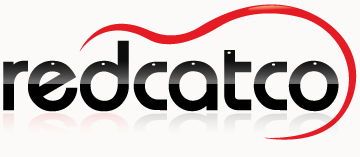Where Are You Going? Vision, Mission and Values – Part IV – Values
 I remember my first trip to Sweden. As I was driven from the airport to Stockholm, I remember seeing these really tall, bright posts in the ground on either side of the road. I wasn’t sure what they were all about.
I remember my first trip to Sweden. As I was driven from the airport to Stockholm, I remember seeing these really tall, bright posts in the ground on either side of the road. I wasn’t sure what they were all about.
Some months later, I returned. With the snow falling fast, and already so thick on the ground that the road was invisible, I realised what those posts were there. They showed where the road was! And, by implication, told you know if you were about to head off of it. They were a very good predictor of where the cars were going to drive, mostly.
Values are like those markers. They are the beliefs which act as boundary guides on the road that is the mission. Cross them, and you’ll know that you are off course; the going gets bumpy and you forget where you were going.
Let’s say your mission involved raising money to sail around the world. You could go out and rob a bank to raise the cash. Bear with me a minute on this one, I know you wouldn’t do that, but it is an example to make the point: There will be some ‘bounds’ that shape how you execute the mission.
Unfortunately values aren’t always as visible as those marker posts. Even if values aren’t written out, there is a set of values at work. And don’t assume that the values written on that employee badge represent the actual values in play.
The only way to assess values is by examining actions. Intent is interesting, but action is telling. Where are resources (time and money) allocated? How are decisions made? These reveal the true values in play, anything else is a desired value. Desired values need inspection. Are they truely desired? If so, what is stopping them being put into practice? Or are they misguided.
True values surface in the hard decisions that are made, in the conflicts that are resolved and the comprises are made. Once you know the values, it becomes easier to predict decisions. This is why executive teams should make values part of the management process.
If all employees understand the (true) values, decisions made down the chain will be more aligned. It works at a personal level too. If you know my values, you’ll have a good sense of how I will prioritise things. That makes me a little easier to predict, and much easier to trust.
Different people, unsurprisingly, have different sets of values. Companies operate most effectively when the people within them operate under similar sets of values. If people believe or value similar things, then they act in complementary ways. Collective action, in a common direction, with broad agreement.
A company full of people with conflicting values will get pulled in different directions and is unlikely to get far. A little bit of diversity is good, but too much means problems down the line. There is no point hiring a talented individual with values that conflict with the rest of the business. It only means problems down the line.
Values can hold us back, or they can propel us forwards. Just as conflicting values within a company cause friction and slow progress, so conflicting in our own personal values can cause stress and hold us back from our goals. We get stuck in internal arguments or constant shifts in direction. If you aren’t making progress towards your goals, I can almost guarantee that you are holding some unresolved value conflicts.


Hello Benjamin:
I buy your argument. What’s your experience regading whether organisations screen for values when they recuit. What tools do they use? What pitfalls do they ensure that they avoid?
I’ve worked with many organisations that don’t include values in the hiring or review process, they weren’t fun places to work.
I have worked with a few that have values as part of the hiring process, and just one that had values as part of the employee review process and compensation process – which worked very well.
Screening for values in interviews works best if there are some ‘negative’ values – i.e. values you _don’t_ want. You can then ask decision questions, for example: “Tell me about a time when you had to choose between refunding a customer or making revenue”.
Values assessments are often subjective, so it is important to have a number of data points. In interviews, have interviews with a number of people in your team, including at least one who has a strong sense of the values, and lives them. For reviews, have the employee add a self-assessment and report how they feel they have done relative to each of the company values, and how well they feel the company is doing.
Hello Benjamin:
Thanks for your thorough reply. It also made me wonder whether psychometric assessments have a role to play here. I’ve conducted some that have given clients an insight (although inevitably not the total picture) into a person’s value system.